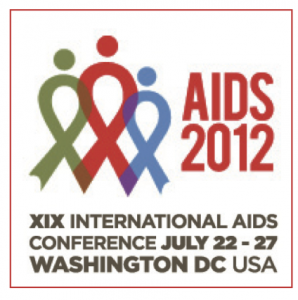High levels of maraviroc in rectal tissue fail to protect macaques from SIV transmission following rectal exposure
1 August 2012. Related: Conference reports, HIV prevention and transmission, World AIDS 19 Washington 2012.
 Simon Collins, HIV i-Base
Simon Collins, HIV i-Base
A poster from the group responsible for key animal PK studies looking at tenofovir and/or FTC for PrEP presented a poster with disappointing findings with maraviroc.
These results are important given the investigational use of maraviroc in prevention studies. Despite high levels of penetration in rectal tissue, maraviroc failed to show any impact on the risk of SIV infection.
Results were presented by Garcia-Lerma in an oral poster discussion session from a single dose PK study and a multiple dose SIV exposure study.
The maraviroc PK profile was determined using 12 macaques exposed to a single dose and was similar to human studies, with significantly higher rectal concentrations: peaking at two hours in plasma (median 451 ng/mL) and at 5–48 hours in rectal secretions (median 2,329 ng/mL) and with median AUC0-24 7.5-fold higher (12,720 vs 1,685 ng.hr/mL, respectively). At day 4 maraviroc concentrations in rectal tissue remained more than 20-fold higher than the IC50, and was sufficient to fully occupy CCR5 in PBMCs. The half-life of CCR5-bound MVC in PBMCs was 2.6 days.
The prevention study used a similar design to that used for tenofovir and FTC, dosing 6 macaques with oral maraviroc (44 mg/kg, comparable to the 300 mg human dose) 24 hours prior to rectal exposure and 2 hours post exposure, in a weekly cycle for five weeks, with an additional four macaques as controls.
Despite the strong PK profile there no evidence for prophylactic efficacy: 5/6 treated animals and 3/4 controls became infected over the five weeks. Infections occurred at week 1, 2, 4, 4 and 5 in the animals exposed to maraviroc which were similar to both these and historic controls.
While the study concluded, “that higher doses were needed to see protection” seems optimistic that an effect would necessarily be found, the concern about using a higher than therapeutic dose is likely to limit the interest in further human studies.
Reference:
Massud I et al. High maraviroc concentrations in rectal secretions after oral dosing do not prevent rectal SHIV transmission in macaques. 19th International AIDS Conference. 22-27 July 2012, Washington. Oral poster discussion abstract WEPDC0105.
http://pag.aids2012.org/Abstracts.aspx?SID=256&AID=4198

